1830 Jan. 20 - A Constituent Assembly (called the "Admirable Congress"), convened by Bolivar and presided by Sucre, meets in Bogota. Mar. 1 - Bolivar resigns and hands over the leadership of the government to José Domingo Caycedo, President of the Council of Government. A new Constitution is signed in Bogota; this Constitution estipulates that to be President the candidate must be at least 40 years old -- Antonio José de Sucre is only 35! Apr. 18 - Venezuela secedes from the Gran Colombia. May 4 - Joaquín Mosquera is elected President for a period of eight years and José Domingo Caycedo is elected Vice-president. May 5 - Pasto joins the "Departamento del Sur."
May 13 - Sucre leaves Bogotá toward Quito. Also on this day, an Assembly of "Notables" (well known persons of the upper class) in Quito signs an Act separating the "Departamento del Ecuador" from the Gran Colombia and forming an Independent State with the name of Ecuador ; the Venezuelan General Juan José Flores is named "Jefe de la Administración del Estado."
May 19/20 - The "Departamentos" of Guayaquil and Cuenca secede from Colombia and join Quito. June 4 - Sucre is assassinated by order of General José María Obando in the mountains of Berruecos. Aug. 11 - Date on which, according to some Ecuadorian historians, the " Tratado Mosquera-Pedemonte" was signed in Lima; these historians claim that the, now missing, Treaty grants Peru sovereignty only up to the southern bank of the Amazon River. Aug. 14 - Flores convenes in Riobamba a Constituent Assembly (packed with his friends); the assembly names Juan José Flores Provisional President. Aug. 20 - Buenaventura joins Ecuador. Sep. 22 - >Juan José Flores assumes the Presidency of the State of Ecuador; José Joaquín de Olmedo is the Vice-president.
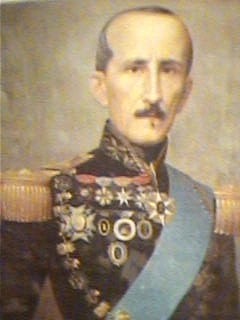 Juan José Flores
Juan José Flores
Sep. 23 - The I Constitution is passed in Quito: under this Constitution, the right to vote is reserved for males who can read and write, regardless of age if married and older than 22 years if single, own property valued at 300 or more pesos, or are professionals (such as: doctor, lawyer, priest). Candidates for public office are required to have a wealth of at least 30,000 pesos. The Indians are placed under the tutelage of the parish priests.
Nov. 23 - In Guayaquil Luis Urdaneta revolts in opposition to the separation from Colombia and in support of his "Bolivarist" brother Rafael Urdaneta who, since the 5th of September, is Dictator of Colombia; Cuenca, Zamborondón, Loja, Quito and Ibarra follow suit. Flores governs only in Pintag and Saquisilí. Because of the death of Bolívar (17th of December), the "Bolivarists" of Luis Urdaneta lose their pretext and their spirit. Dec. 18 - Flores incorporates Popayán to Ecuador by decree.
The Customs House of Guayaquil and the tribute from the Indians constitute the principal source of revenue of the State. The "whites" and the clergy are the principal owners of land.
1831 The first Constitutional Congress of Ecuador meets. Sep. 15 - José Modesto Larrea replaces José Joaquín de Olmedo as Vice-president. Oct. 9 - The first Law on Currency is passed.
Congress decrees annexation of Cauca to Ecuador. General Hilario López and General Obando prefer that Chocó, Cali, Buga and Popayán be subject to the Government of Bogota. Oct. 10/12 - The "Vargas" battalion, composed of Colommbians and Venezuelans, rebels because the troops have not been paid and wish to return to their homelands or join General Obando in Pasto. After the men are paid they kill their commanding officer, Colonel White, in Guallabamba. They are pursued by troops commanded by the black General Juan Otamendi and defeated in Tusa and Tulcán; the prisoners are taken to Quito and shot. Of the 433 men only 200 escape death.
1832
Feb. 12 - Ignacio Hernández takes possession
of the Galapagos; General José de Villamil is named Governor.
Aug. 12 - The "Flores" battalion rebels in Latacunga for the same reason
that the "Vargas" did in 1831. The rebels kill almost all of their officers,
loot Latacunga and continue toward Manabí avoiding Guayaquil; in Bahia,
General Otamendi annihilates them -- of 538 men only 14 survive, and of all
their women only 12. Sep. 19 - Pasto is occupied by General Obando.
Dec. 8 - "Tratado de Pasto": Under this Treaty,
Flores cedes to Colombia all the territory north of the Carchi River.
Peru annexes southern Mainas to the "Departamento de Amazonas."
1833 May 12 - First publication of the "El Quiteño Libre". Oct. 12 - Revolution of the "Chihuahuas": Lead by Colonel Mena, insurgents in Guayaquil impede banishment of officers that supported Luis Urdaneta and proclaim José Vicente Rocafuerte Rodríguez de Bejarano "Jefe Supremo." Oct. 19 - Members of "El Quiteño Libre" attempt a "coup d'état" in Quito but fall prey to a government trap; Nicolás Albán, Colonel Francisco Hall and others are assassinated. Oct. 20 - Vicente Rocafuerte proclaims himself "Jefe Supremo" of Guayaquil. Nov. 24 - Flores takes Guayaquil by way of the Salado after military victories in Babahoyo and Yaguachi; the black Otamendi, with his habitual ferocity, lead the attacks -- 200 "Chihuahuas" and 50 of Flores' combatants died. Rocafuerte takes refuge aboard a warship of the United States Navy. The United States refuses to turn Rocafuerte over to Flores. Rocafuerte blockades Guayaquil from Puná.
1834 June 12 - Ibarra and Otavalo proclaim José Félix Valdivieso, a Minister of Flores, "Jefe Supremo". June 18 - Rocafuerte is mysteriously captured in Puná and delivered to Flores. July 3 - Flores pardons Rocafuerte and offers him the "Jefatura Suprema" of the Province of Guayaquil. July 13 - Followers of Valdivieso take Quito and proclaim him "Jefe Superior" of the province. Aug. 25 - Cuenca supports Valdivieso. Sep. 10 - A Municipal Council in Guayaquil names José Vicente Rocafuerte Rodríguez "Jefe Supremo" of Guayas.
Two factions govern the country: the "Restauradores" (Restorers), withJosé Félix Valdivieso, dominate the highlands, including Cuenca and Loja, and in the coastal region Manabí and Esmeraldas; the "Convencionales", with Flores and Rocafuerte, in Guayas, El Oro and Los Ríos. The "Restauradores" want to restore the union of Ecuador with Colombia.
Sep. 5 - Babahoyo falls to the "Restauradores". Sep. 10 - Flores turns control of Guayaquil over to Rocafuerte and soon departs to the highlands to make war against the "Restauradores" of Valdivieso.
1835 Jan. 18 - Battle of Miñarica: Flores and 1,000 of his "Convencionales" defeat 2,000 "Restauradores" of Valdivieso. Flores looses 50 men against 600 lost by Valdivieso, and takes 400 prisoners; to 17 of them General Otamendi assassinates in the field. Jan. 31 - An Assembly in Quito proclaims Rocafuerte "Jefe Supremo" of the Republic. June 22 - The II Constituent Congress meets in Ambato to reform the Constitution and close the possibility of a federation with Colombia. Aug. 8 - José Vicente Rocafuerte Rodríguez assumes the presidency of the republic; Juan Bernardo León is the Vice-president.
 José Vicente Rocafuerte Rodríguez
José Vicente Rocafuerte Rodríguez
Aug. 13 - The II Constitution is passed in Ambato. Aug. 15 - The "Ley de Procedimiento Civil" is passed. Aug. 26 - The first "Ley de Elecciones" is promulgated. Sep. 17 - The English naturalist Charles Darwin (credited with the theory of evolution) arrives to Galapagos. Oct. 3 - The revolution directed by Colonel Tamayo and Colonel Mendoza comes to an end; Colonel Frutos Oses, Commander Brito and 18 other prisoners are shot. Oct. 9 - The Nautical School of Guayaquil is founded by Juan Illingworth.
Commander Wilches and Officer Ramos are executed by firing squads in Atacames. Commander Jesús Valverde, Commander Rafael Jiménez, 6 officers and a sergeant are executed by firing squads in Palenque. Commander Espinosa, Captain González, Captain Carrera and a corporal are executed in the North.
1836
Without legal process, Facundo Maldonado Paris,
a grenadine officer, is executed by a firing squad in the Santo Domingo Square
of Quito.
Feb. 20 - Rocafuerte dictates the "Decreto Orgánico
de Enseñanza Pública."
The Academy of Lawyers is founded.
1837 Apr. 13 - Congress approves payment of the debt, assigned by Colombia and Venezuela, incurred for the Independence. At the request of Rocafuerte, Congress approves a Penal Code establishing the death penalty.
1838
Mar. 8 - The Military School of Quito is created
by decree.
Mar. 10 - Rebellion in Riobamba against Rocafuerte. Mar.
17 - Combat of Hualilahua; the rebellion in Riobamba is suffocated.
Riobamba inaugurates the "Colegio San Felipe."
1839 Feb. 1 - Juan José Flores, elected by Congress, assumes the Presidency of the Republic; Francisco Aguirre is elected Vice-president.
Freedom of the press is allowed. The creation of the "Banco de la República" is approved.
1840 Feb. 16 - Spain recognizes Ecuador as a State.
Flores goes to Pasto in support of the Government of Colombia and defeats the rebellious General Obando. Guayaquil inaugurates the first theater in the country and constructs the first steamship built in the country (later named Guayas).
1842 An epidemic of yellow fever kills more than 3,000 persons in Guayaquil.
1843 Apr. 1 - In Quito a Constituent Assembly (composed in its majority of government employees -- among them 9 foreign military officers) passes the III Constitution (labeled the "Charter of Slavery" by Rocafuerte); under this Constitution, the president's term of office is eight years and all males 22 through 55 years of age have to pay a "tribute" tax of 3 pesos and 5 reales.
Apr. 1 - Juan José Flores, elected for a term of eight years by the Constituent Assembly, assumes the post of President of the Republic; Francisco Marcos is the Vice-president.
Twelve of the fifteen generals in the Army are foreigners.
1845
Mar. 6 - "Marcistas" (José Joaquín
de Olmedo, Vicente Ramón Roca and Diego Noboa) revolt in Guayaquil
and form a "gobierno provisional"; anti-Flores troops
commanded by General Antonio Elizalde LaMar take the cavalry barracks.
Mar. 12 - General José Maria Urbina, Governor of
Manabí, supports the Government of Guayaquil.
May 3 - "Marcist" troops under General Antonio Elizalde
LaMar are defeated in "La Elvira", hacienda belonging to Flores, by troops
under Flores and General Juan Otamendi.
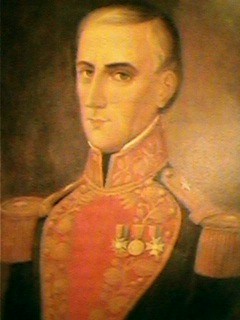 Antonio Elizalde LaMar
Antonio Elizalde LaMar |
June 5 - Cuenca adheres to the provisional government of Guayaquil. June 17 - The "Tratado de La Virginia" is signed between Flores and the "Marcist Government;" Flores resigns the Presidency because he believes that the "Marcists" no longer fight for principles but against him as a person.
Oct. 3 - A Constituent Assembly in Cuenca does not recognize the "Tratado de La Virginia" and reforms the Constitution. Oct. 29 - The Asambly annuls the "Tratado de la Virginia" because the concessions granted to Flores were unacceptable and contrary to the security of the State.
The "Marcist" nationalist movement replaces the Colombian-Venezuelan tricolor with a flag consisting of three vertical stripes: white, light blue and white.
Dec. 8 - The IV Constitution is passed in Cuenca and Vicente Ramón Roca Rodriguez assumes the Presidency of the Republic; Pablo Merino is the Vice-President (replaced by Manuel de Azcásubi y Matheu in May 1847).
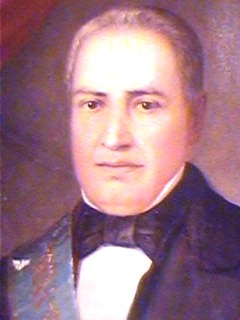 Vicente Ramón Roca Rodriguez
Vicente Ramón Roca Rodriguez
1846 Funded by bankers of Queen Maria Cristina of Spain, Juan José Flores prepares in England a naval squadron and an army (three thousand Spanish, English and Irish mercenaries) to invade Ecuador and take revenge on the annulment of the "Tratado de La Virginia" and the assassination of General Juan Otamendi. Roca, Rocafuerte and others manage, by diplomatic means and editorials in foreign newspapers, to compel the Lords of the British Treasury to confiscate the three ships Flores has anchored in the Thames; without ships the plan for an invasion dies.
1849
Sep. 14 - Congress names Manuel de Azcásubi
y Matheu "Encargado del Poder" after Noboa and Elizalde do not obtain the
required number of votes.
Oct. 16 - Manuel de Azcásubi y Matheu
assumes the post of "Encargado del Poder."
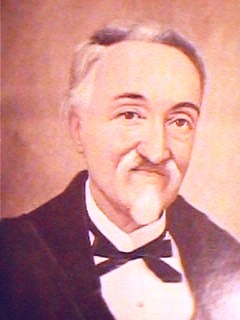 Manuel de Azcásubi y Matheu
Manuel de Azcásubi y Matheu
1850
Feb. 20 - The Army troops in Guayaquil do not recognize Ascázubi
as the head of the government and proclaim General José Maria Urbina
"Jefe Superior" of the Province; Urbina argues that the government of Azcásubi
is unconstitutional, arbitrary in its procedures and inclined toward "Floreanismo."
Mar. 2 - An Assembly in Guayaquil names Diego de Noboa y Arteta
"Jefe Supremo" of Guayas.
June 6/10 - Quito, Latacunga and Riobamba do not recognize
the government of Noboa. June 14/17 - Cuenca, Loja and Manabí
proclaim General Antonio Elizalde LaMar as their "Jefe Superior".
July 27 - Noboa and Elizalde sign the agreement of "La Florida" to join
forces against Ascázubi. Ascázubi resigns after the
revolution triumphs. Dec. 8 - Abiding by the agreement of "La Florida,"
the Second Convention meets in Quito; Diego de Noboa y Arteta is
named Interim President. Roca and Elizalde are banished immediately. The
Second Convention returns the legislative body to a unicameral system.
1851 Feb. 26 - Diego de Noboa y Arteta, who was elected by the National Convention, assumes the post of President of the Republic. The post of Vice-president was abolished by the Constitution of 1851.
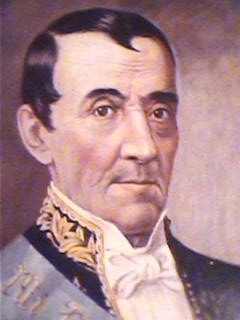 Diego de Noboa y Arteta
Diego de Noboa y Arteta
Feb. 27 - The V Constitution is passed in Quito. Mar. 25 - Noboa allows the Jesuits to return to the country. July 17 - General José María Urbina y Viteri, chief of the garrison of Guayaquil (named to that post by Noboa), accuses Noboa of fomenting war with Colombia with the purpose of recalling Flores and betraying the "Marcismo"; he orders General Francisco Robles to arrest Noboa when entering Guayaquil and to deport him on a ship headed to Peru. July 24 - José María Urbina y Viteri gets himself proclaimed "Jefe Supremo" of the Republic. July 25 - Urbina abolishes slavery by decree.
Fearful of Urbina, the Roman Catholic order of the Augustines sells the Capata hacienda, in Pallatanga, but the woman who bought it renages payment and retains the property.
1852 Jul. 7 - A Constituent Assembly meets in Guayaquil. Jul. 14 - Juan José Flores and mercenaries sail from Callao and attempt to take Guayaquil after shelling it. Sep. 6 - The VI Constitution is passed in Guayaquil; José Maria Urbina y Viteri assumes the post of President of the Republic. Pacífico Chiriboga is the Vice-president.
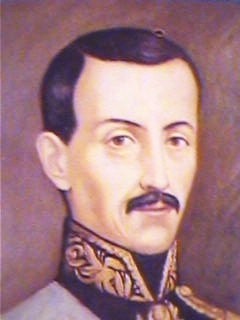 José María Urbina y Viteri
José María Urbina y Viteri
Nov. 21 - The Assembly decrees the expulsion of the Jesuits.
The taxes on articles of basic necessity and export duties are revoked. Urbina governs with a hard hand backed by his "Canónigos", the much feared "Tauras" battalions composed of liberated blacks; all opposition to his government is stopped exclusively with banishment's, large fines and pecuniary contributions.
1853 Basing its action on the "Cédula Real de 1802," Peru creates the "Departamento de Loreto" north of the Amazon River; the government of Urbina protests the action because Ecuador argues the Royal Decree of 1802 applies exclusively to ecclesiastical matters. In 1870 Antonio Flores Jijón (son of Juan José Flores and future president of Ecuador) consults the Archives of Simancas in Spain and concludes that the Royal Decree of 1802 gave the Viceroyalty of Peru total jurisdiction over Mainas.
1856
Sep. 1 - Following the Constitution of 1852, "Juntas Electorales"
-- not the "Cámaras" -- elect General Francisco Robles García
to succeed Urbina.
Oct. 16 - Francisco Robles Garcia assumes
the post of President of the Republic and then moves the seat of government
to Guayaquil. Jerónimo Carrión is the Vice-president.
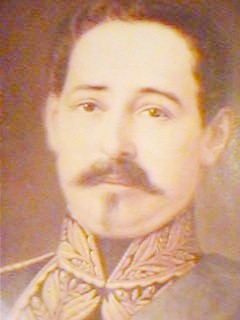 Francisco Robles Garcia
Francisco Robles Garcia
Nov. 23 - Doña Manuela Sáenz ("La Libertadora"), exiled by Rocafuerte in 1835, dies with diphtheria in severe poverty and abandoned in Paita, Peru.
1857 Sep. - The "Convenio Icaza-Prittchet" is signed between the Government of Ecuador and British creditors who provided the funds for the Independence; this agreement, complementary to the Espinel-Mocatta agreement ratified by Congress in 1854, during the presidency of Urbina, makes concessions of public lands in Esmeraldas, Canelos and Zamora as part of the repayment. The portion due in currency would be paid by Peru as an offset to the debt it has with Ecuador for help received to obtain its Independence. Oct. 30 - The law of personal contribution by the IIndians is abolished. The production of cocoa surpases that of all times.
1858 July 30 - Peru breaks diplomatic relations because Ecuador signs the "Convenio Icaza-Prittchet;" Peru argues that the agreement grants concessions of Peruvian territory to the British creditors. Congress gives Extraordinary Powers to President Robles. Oct. 26 - Ramón Castilla, President of Peru, orders the blockade of Ecuadorian sea ports. Nov. 4 - Because of the Peruvian threat the government seat is moved to Riobamba.
1859
Jan. 12 - Robles moves the seat of government
back to Guayaquil.
Mar. 15 - General Manuel Tomás Maldonado orders
the arrest of Robles in Guayaquil; General Guillermo Franco, a friend of
Robles, personally thwarts the attempt. May 1 - A "Gobierno Provisional
" composed of Gabriel García Moreno, Jerónimo Carrión,
Pacífico Chiriboga and Rafael Carvajal is named in Quito.
May 6 - Jerónimo Carrión (Vice-president of Robles) is recognized in Cuenca as "Jefe" of the Government.
June 3 - To support Robles, General Urbina departs toward Quito and defeats the troops of Garcia Moreno in Tumbuco (Guaranda). The "gobierno provisional" in Quito is dissolved. Ago. 31 - Incapable of stopping the advance of Rafael Carvajal from Ibarra, Robles resigns the post of President in Guaranda. Sep. 4 - Commander Daniel Salvador takes Quito and restores the "Gobierno Provisional".
Sep. 16 - On this date, argue some Ecuadorian historians, was signed a secret agreement ("Esposion de Pasto") between Ramón Castilla (President of Peru) and Tomás Cipriano Mosquera (President of Colombia) that would divide Ecuador between Peru and Colombia.
Sep.17 - General. Guillermo Franco, Commandant General of Guayaquil, takes the "Jefatura Suprema" of Guayaquil and forces Robles and Urbina to leave the country.
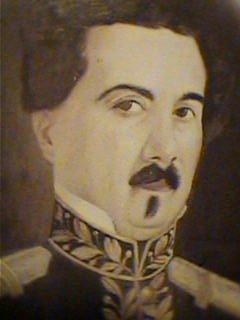 Guillermo Franco
Guillermo Franco
Peruvian troops land in Guayaquil. Sep. 18 - Lojanos name Manuel Carrión Pinzano "Jefe del Distrito Federal Lojano." Dec. 21 - García Moreno asks the chargé d'affairs of France in Ecuador, Emile Trinité, to accept Ecuador as a protectorate of France.
1860 The troops of General Franco sent to Quito are defeated in battle at Yagui and Sabún. Jan. 25 - General Franco and Peru's President Ramón Castilla sign the "Tratado de Mapasingue" annulling the "Tratado de Guayaquil" of 1829 and recognizing the "Cédula Real" of 1802; for his cooperation, Franco is to receive financial assistance and military equipment from Peru. The Congress of Ecuador and the Congress of Peru refused to ratify this treaty in 1861 and 1863, respectively, because it was signed in connivance.
General Juan José Flores, who is living in Lima
and has been receiving a pension from the Peruvian government, offers Garcia
Moreno his military skills to defeat General Franco. Flores arrives
in Quito and is named Chief of the Army by García Moreno.
Aug. 7 - The troops of Flores defeat those of Franco at
Bodegas (Babahoyo).
Sep. 24 - Flores takes Guayaquil by way of the Salado
and Franco flees by ship toward Peru. Sep. 26 - García Moreno decrees
that the "marcista" flag (white, light blue, white) be replaced by the tricolor
(yellow, blue, red) of today.
1861 Jan. 10 - A Constituent Assembly meets in Quito. Jan. 17 - Gabriel García Moreno assumes the post of Interim President. Apr. 2 - Gabriel García Moreno assumes the post of Constitutional President; Mariano Cueva is the Vice-president.
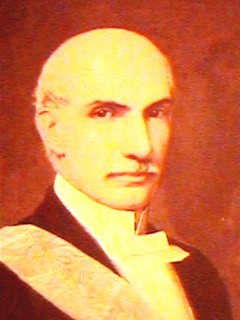 Grabriel García Moreno
Grabriel García Moreno
Apr. 10 - The VII Constitution is passed in Quito; this Constitution provides for the universal and proportional vote.
García Moreno renews his proposal to convert Ecuador into a protectorate of France; the proposal is rejected by France. The Constituent Assembly decrees the construction of the Southern Railroad (from Quito toward Babahoyo, Cuenca, Santa Rosa and Zaruma). Also, the Assembly creates the public schools Olmedo in Manabí and Bolívar in Ambato.
1862 Garcia Moreno declares war on Colombia because he is incensed by incidents caused by Colombians at the border with Ecuador. July 31 - García Moreno and his troops are defeated in the battle of Las Gradas by the troops of General Julio Arboleda; falling prisoner to Arboleda near Tulcán, García Moreno makes a secret agreement ("Tratado de Tulcán") with Arboleda to provide him with arms and money.
Sep. 26 - A Concordat between Ecuador and the Vatican is signed in Rome; the Concordat grants bishops the right to censure all books, requires that only catholic education be allowed by the State and returns to the Pope the right to appoint bishops.
Jesuits evicted from Colombia by the Colombian President General Tomás Cipriano de Mosquera are admitted to Ecuador by García Moreno. The construction of the road from Quito to the South begins.
1863 Nov. 2 - García Moreno again declares war on Colombia because he is irritated about the actions and accusations made by General Tomás Cipriano de Mosquera. Dec. 6 - Mosquera defeats General Juan José Flores in Guaspud (Colombia) and occupies Ibarra. Dec. 30 - Because of public opinion against the war between the two nations, the governments of Ecuador and Colombia agree to cease hostilities in the " Tratado de Pinsaqui."
1864 Insurrections by "Liberales" in Manabí. June 22 - General Manuel Tomás Maldonado leads an insurrection in Guayaquil; Maldonado is captured. Aug. 30 - In a Te Deum atmosphere reminiscent of medieval Spain, García Moreno has Maldonado shot in the Santo Domingo Square of Quito in the presence of Maldonado's wife.
Sep. 30 - General José María Urbina (a "Liberal"), having taken Machala, is defeated in Santa Rosa by government troops. During the campaign against Urbina, General Juan José Flores dies from illness aboard a ship in Jambelí.
1865 June 25 - García Moreno defeats the second "Urbinist" invasion (Urbina, Robles and Franco) in the naval action of Jambelí; he takes 36 prisoners, pardons 10 and shoots the rest. A youngster, son of Colonel José Maria Vallejo, is shot in the presence of his father; Vallejo is executed hours later. After returning to Quito, Garcia Moreno orders the execution of another prisoner -- the Argentinean medical doctor Santiago Viola -- for alleged complicity.
Sep. 7 - Jerónimo Carrión y Palacio assumes the post of Constitutional President; Pedro José de Arteta is the Vice-president.Carrión spends more of his time at cock fights than at the Government Palace.
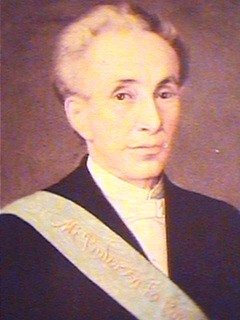 Jerónimo Carrión y Palacio
Jerónimo Carrión y Palacio
Juan León Mera and Antonio Neumane (founder of
the Conservatory of Guayaquil) write and compose, respectively, the verses
and notes of the National Anthem..
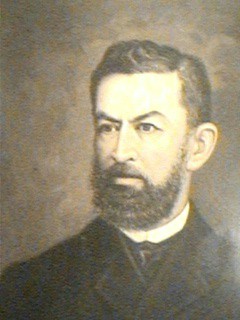 Juan León Mera
Juan León Mera |
1866 Feb. - Ecuador declares war on Spain. Apr. 20 - The Concordat of 1862 is declared law; under this agreement, no dissident cult or society condemned by the Catholic Church will ever be admitted to Ecuador.
1867 The University of Cuenca is founded. Nov. 6 - Jerónimo Carrión resigns the Presidency before Congress after he is censured. Nov. 7 - Pedro José de Arteta (the Vice-president) assumes the post of "Encargado del Poder". Elections are convened.
1868 Jan. 20 - José Javier Espinosa assumes the post of Constitutional President; Pedro José de Arteta is the Vice-president.
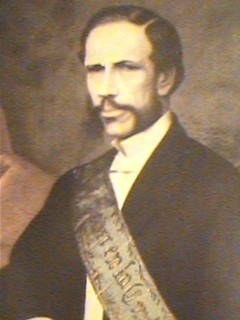 José Javier Espinosa
José Javier Espinosa
Mar. 22 - The volcano Guagua Pichincha Erupts. Aug. 16 - Earthquake destroys Otavalo, Atuntaqui and Ibarra; it is estimated that 20,000 inhabitants die and 50,000 persons are left homeless.
Colonel Francisco Xavier Salazar suffocates a rebellion in Guano.
1869 Jan. 16 - Supported by troops from the artillery barracks in Quito, García Moreno initiates a "coup d'état" and deposes President Espinosa. Jan. 17 - García Moreno assumes the post of Interim President. Feb. 13 - By Executive Decree the "Ley de Instrucción Pública" of 1863 is repealed. Mar. 19 - José de Veintimilla dies in Guayaquil during a failed revolution against Garcia Moreno. May 16 - Manuel de Ascázubi (brother in-law of García Moreno) is designated Interim President by a National Convention convened by García Moreno.
Aug. 10 - Gabriel García Moreno assumes the post of Constitutional President; Francisco Javier León is the Vice-president. Aug. 11 - The VIII Constitution ("The Black Charter") is passed in Quito; the Constitution gives the president dictatorial power, the term of his office is for six years but he can be re-elected, imposes the death penalty for political crimes and forbids the cults or religions other than Catholicism.
An Executive Decree suspends payment of the "English Debt". The Polytechnic School of Quito is created. The construction of the penitentiary of Quito is initiated.
1870
May 3 - The National Conservatory of Music is
created in Quito.
Nov. 1 - The construction of the road from Ibarra to Esmeraldas
is initiated.
The Jesuit school "Colegio San Gabriel" is inaugurated
in Quito.
1871 Ecuador, Chile, Peru and Bolivia sign an armistice with Spain in Washington.
Indian insurrections in Azuay and Chimborazo are directed by Fernando Daquilema. The cobblestone road between Quito and Ambato is inaugurated. Sep. 7 - The construction of a telegraph along the main roads is authorized. Nov. 8 - The "Nueva Ley de Instrucción Pública" provides for free and mandatory elementary education.
1872 Apr. 8 - The leader of Indian insurrections, Fernando Daquilema, is executed in Yaruquies (Chimborazo) by order of Garcia Moreno.
1873 The first telegraph for the railroad is installed between the towns of Yaguachi and Milagro. The road to the south reaches Sibambe.
1875
Mar. 13 - García Moreno is re-elected President.
Aug. 6 - García Moreno is assassinated in Quito by Faustino Rayo,
Roberto Andrade, Manuel Cornejo Astorga, Abelardo Moncayo and others; Rayo,
the principal assassin, is killed by the guards and Manuel Cornejo is arrested.
Juan Montalvo says later "my pen killed him".
Aug. 6 - Francisco Javier León, Minister
of the Interior, assumes the post of "Encargado del Poder." Sep. 1
- Manuel Cornejo is shot by a firing squadd.
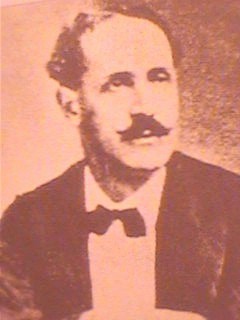 Francisco Javier León
Francisco Javier León
Sep. 16 - José Javier Eguiguren, new Minister of the Interior, assumes the post of "Encargado del Poder;" Francisco Javier León is almost insane because he ordered the execution, without definite proof of guilt, of Gregorio Campuzano (acused to have conspired in the assassination of Garcia Moreno). Dec. 9 - Antonio Borrero Cortázar assumes the post of President of the Republic; there is no Vice-president.
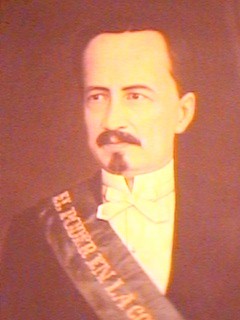 Antonio Borrero Cortázar
Antonio Borrero Cortázar
1876 Borrero names General Ignacio de Veintemilla Chief of the Army but soon dismisses him. Sep. 8 - The Municipal Council of Guayaquil gives Ignacio de Veintemilla the investiture of "Jefe Supremo." General Francisco Robles takes Babahoyo in support of Veintemilla. Dec. 14 - The "Constitucionales" of Borrero are defeated in Galte by the "Ejército Regenerador" of Veintemilla under the command of General José María Urbina; nearly a thousand combatants die.
1877 Mar. 30 - José Ignacio Checa y Barba, Archbishop of Quito who criticized Veinemilla, is assassinated with poison.
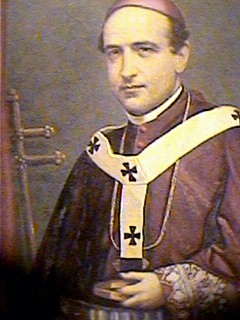 Archbishop José Checa y Barba
Archbishop José Checa y Barba
June 28 - Veintemilla suspends the Concordat, and declares in force the "Ley del Patronato Colombiano" passed in Cúcuta in 1821, after the clergy makes the people believe that the eruption of the volcano Cotopaxi (which darkens Quito with ash) is an act of God against his government. The bishops of Riobamba and Loja flee in fear of Veintemilla.
The order of the Augustines continue to sell their "haciendas" and other properties.
1878 Mar. 31 - The second Constituent Assembly in Ambato elects Veintemilla President. Apr. 6 - The IX Constitution is passed in Ambato; this Constitution repeals the death sentence for political and common crimes and secularizes teaching. Apr. 21 - Ignacio de Veintemilla Villacís assumes the post of President of the Republic; there is no Vice-president.
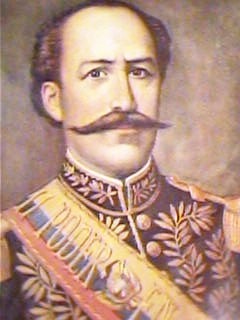 Ignacio de Veintemilla Villacís
Ignacio de Veintemilla Villacís
Sep. 4 - Vicente Piedrahita, a presidential candidate who opposed Veintemilla, is assassinated in the hacienda "La Palestina." Nov. - Revolts in the North lead by General Manuel Santiago Yépez and Colonel Tomás Landázuri.
1879 The Government and the Municipality of Quito sign a contract for the construction of the "Teatro Nacional" (now called Teatro Sucre) with Leopoldo Fernández Salvador.
1880
Legislative Decree ratifies the new Concordat
with the Vatican.
Oct. 20 - Eloy Alfaro arrives in Esmeraldas and, supported
by Colonel César Guedes (Military Chief of Esmeraldas), proclaims
himself "Jefe Supremo;" however, the expedition fails. Oct. 30 - "Liberales"
revolutionaries attack Tulcán and proclaim Juan Montalvo "Jefe Supremo;"
the episode lasts only one day.
The government of Ecuador signs a Treaty of Peace and Friendship with Spain.
Fearing Veintemilla, the Roman Catholic order of the "Redentoristas" sell many of their properties.
1882 Mar. 14 - A new version of the Concordat is adopted. Mar. 25 - Veintemilla declares himself "Jefe Supremo" before the elections. Quito and Guayaquil proclaim Ignacio de Veintemilla "Jefe Supremo" on the 26th of March and on the 2nd of April, respectively. June - The armed struggle by "Liberales" and "Conservadores" against the dictatorship of Veintemilla begins. Nov. 9 - In Guayaquil, Veintemilla has the "Liberal" journalist Miguel Valverde, who writes against his dictatorship, whipped in public.
1883 Jan. 6 - Government troops of Veintemilla defeat the "Restauradores" troops in the battle of Esmeraldas-Las Palmas. Jan. 9 - Government troops battle "Restauradores" in Bodegas (Babahoyo) without achieving victory. Jan. 10 - In Quito, the armies of "Restauradores" from the Center, North and South defeat the "Dictatorial" army of the "Generalita" Marieta de Veintemilla (niece of General Veintemilla born in Peru).
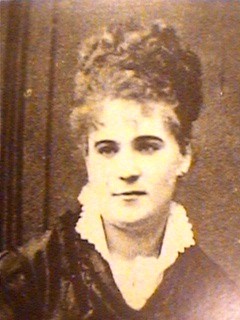 Marieta de Veintemilla
Marieta de Veintemilla
Jan. 14 - A "Pentavirato" (General Agustín
Guerrero, Luis Cordero, Rafael Pérez Pareja, Pablo Herrera and Pedro
Lizarzaburu) is formed in Quito.
Feb. 4 - Government troops defeat "Restauradores" in the
battle of El Salado (across Puná). From February 6th to July 7th,
six battles take place (Esmeraldas, La Atarazana, Las Palmitas, Puerto Liza,
Cerro El Carmen and Baños de El Salado) between government troops and
"Restauradores"; the government is not victorious in any of them. June
5 - Eloy Alfaro is declared "Jefe Supremo" of Manabí and Esmeraldas.
July 9 - Veintemilla flees on a ship to Lima after Alfaro and José
Maria Sarasti siege him in Guayaquil. July 10 - Pedro Carbo is declared
"Jefe Supremo" of Guayaquil.
July - There are three governments in the country : Alfaro in Manabí and Esmeraldas, Pedro Carbo in Guayaquil, and the "Pentavirato" in Quito.
Oct. 15 - José María Plácido Caamaño assumes the post of Interim President after he is elected by a Constituent Assembly.
A Legislative Decree authorizes to negotiate with the Vatican the substitution of the "Diezmo" for another tax. The construction of the road to the North is initiated in Quito.
1884 Feb. 10 - José María Plácido Caamaño y Gómez Cornejo assumes the post of President of the Republic; Agustin Guerrero Lizarzaburu is the Vice-president. Feb. 13 - The X Constitution is passed in Quito; this Constitution repeals the death penalty. July 9 - The telegraph between Guayaquil and Quito is inaugurated.
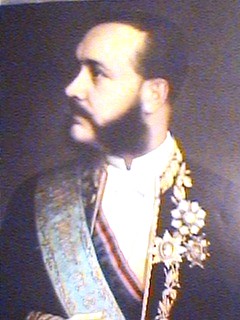 José Maria Plácido Caamaño y Gómez Cornejo
José Maria Plácido Caamaño y Gómez Cornejo
Nov. 15 - The "Revolución de los Chapulos " begins - Liberals of Charapotó (Manabí) proclaim Eloy Alfaro "Jefe Supremo." Dec. 5 - Alfaro is defeated at the naval combat of Jaramijó by government steamships; Alfaro flees.
Indians in Licto (Province of Chimborazo) rebel.
First Law of Coins - The "Peso" of eight "Reales" is replaced by one "Sucre" divided into one hundred "Centavos." The daily "El Telégrafo" is founded in Guayaquil.
1885 Jan. 1 - Nicolás Infante Díaz (a "Liberal") is executed by a firing squad in Palenque. Groups of armed "Alfaristas" (called "Montoneras") create instability in the coastal region. Revolutionaries in the South are shot. The road Quito-Archidona is initiated.
1886 Dec. 7 - In Loja government troops defeat troops of "Liberales" that came from Lima under the command of Colonel Luis Vargas Torres; Vargas Torres is captured and taken to Cuenca to face a Council of War.
1887 Mar. 20 - Colonel Luis Vargas Torres is executed by a firing squad in Cuenca. Aug. 1 - The "Convenio Espinoza-Bonifaz" is achieved with Peru; it proposes that the King of Spain arbitrate the border disputes. Nov. 24 - The Teatro Nacional Sucre is inaugurated in Quito.
1888 Aug. 17 - Antonio Flores Jijón (son of General Juan José Flores) assumes the post of President of the Republic; Pedro José Cevallos Salvador is the Vice-president.
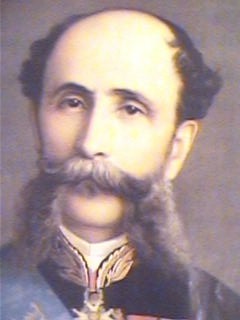 Antonio Flores Jijón
Antonio Flores Jijón
The "Ministerio de Instrucción Pública" is re-established. The "Junta de Beneficencia" is founded in Guayaquil.
1889 June 5 - A Chamber of Commerce is founded in Guayaquil. A Decree substitutes the "Diezmo" to the Catholic Church for a tax on property and exports of cocoa. June 18 - Congress approves the "Tratado (limítrofe) Herrera-García" with Peru. Under this Treaty, Ecuador would surrender a considerable portion of its territory but retain direct access to the Marañón River between the Chinchipe and Pastaza rivers.
The "Ley de Timbres" (Stamp Act) for documents is passed. The Municipal Library is inaugurated in Quito.
1892 July 1 - Luis Cordero Crespo assumes the post of President of the Republic; Pablo Herrera is the Vice-president. The "Instituto La Salle" in Quito opens its doors.
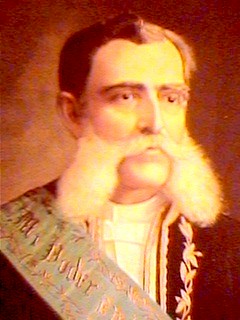 Luis Cordero Crespo
Luis Cordero Crespo
1894
Jan. - Vicente Lucio Salazar assumes the post
of Vice-president.
Jul. 25 - Congress leaves without effect the approval
given in 1890 to the "Convenio Herrera-García;" Peruvian modifications
to the agreement deprived Ecuador with a direct access to the Marañón
River.
Tripartite Treaty of Borders with Colombia and Peru.
Dec. 3 - The Ecuadorian flag is raised on the warship "Esmeralda" bought from Chile by enterprising Ecuadorians to resell it to Japan; the display of the flag on the ship, authorized by the Governor of Guayas Plácido Caamaño, creates a political crisis known as the "Venta de la Bandera" (Sale of the Flag).
1895
Feb. 12 - Rebellion against Cordero in El Milagro.
Apr. 9 - Government troops combat "Liberales" and "Conservadores" that occupy
Guaranda.
Apr. 10 - Government troops battle "Conservadores" in
Quito. Apr. 16/17 - Cordero resigns and Vicente Lucio Salazar, the
Vice-president, becomes the new President.
Carlos Concha Torres and other "Liberales" take the city of Esmeraldas.
May 9 - "Liberales" under Colonel Manuel Serrano triumph
in El Oro.
May 28 - Riobamba declares itself against the government.
June 4 - Guayaquil names Ignacio Robles "Jefe Civil y Militar." June
5 - A Popular Assembly in Guayaquil proclaims José Eloy Alfaro
"Jefe Supremo" of the Republic.
Government troops defeat "Liberales" in Paluguillo (near Quinche) and in the Tablón de Machángara (Azuay) on the 5th and 15th of June, respectively. June 19 - Eloy Alfaro arrives in Guayaquil from Panama and takes command. July 22 - "Liberales" triumph over government troops in Guangopud (Chimborazo).
Government troops triumph over "Liberales" in Loja and San Miguel de Chimbo, the 29th of July and 6th of August, respectively. Aug. 9 - "Liberales" triumph in Palenque and Quevedo (Los Ríos). Aug. 15 - The "Liberales" defeats the troops of General José Maria Sarasti in Gatazo (Chimborazo); they also triumph in Girón (Azuay).
1896
May 29 - Ecuadorian "Conservadores" exiled in
Colombia and their Colombian allies clash with government troops in Cabras
(Carchi).
July 5 - "Conservadores" under Colonel Antonio Vega Muñoz
take Cuenca.
Aug. 20 - The "Liberales" under General Ulpiano Páez
defeat the troops of Vega in Lircay, Lenta and Girón. Aug.
22 - The "Liberales" triumph in Cuenca after fierce resistance involving
house-to-house combat; 1,250 combatants die.
Oct. 5/6 - Almost one half of Guayaquil is destroyed by fires. Oct. 9 - The first "Liberal" Constituent Assembly (the XII National) meets in Guayaquil and names José Eloy Alfaro Delgado Interim President.
Jesuit missionaries are expelled to Brazil. The "Junta de Beneficencia" is created in Quito.
1897 Jan. 14 - The XI Constitution (first "Alfarista" Constitution) is passed in Quito; this Constitution establishes the freedom of worship, abolishes the death penalty and imposes equality of all citizens under the Law. Jan. 17 - José Eloy Alfaro Delgado assumes the post of President of the Republic; Manuel Benigno Cueva is the Vice-president.
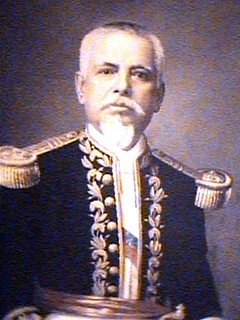 José Eloy Alfaro Delgado
José Eloy Alfaro Delgado
A law protecting the right of freedom of thought is passed.
May 29 - The "Ley de Instrucción Pública" is passed; this
law puts the cycle of education (including at universities) under the control
of the State and makes elementary education mandatory, gratis and laic.
June 1 - The "Instituto Nacional Mejía" is founded.
June 17 - The contract to build the railroad between Guayaquil
and Quito is signed.
1898 Dec. 3 - Military forces under Antonio Vega attempt to take Cuenca but are routed by "Liberales" under Colonel Ullauri.
Treasury contributions to the clergy are reduced; the taxes that replaced the "Diezmo" are eliminated. Dec. - "Conservadores" are defeated by government troops in Taya (Carchi) and Guangoloma (Cotopaxi).
1899
Jan. 7 - Military forces composed of Ecuadorians coming from Colombia are
confronted by government troops in Agualongo (Imbabura). Jan. 10 - Forces
of Ecuadorian "Conservadores" arriving from Peru defeat "Liberales" in
Loja.
Jan. 23 - Government troops defeat the "Conservadores"
of General José María Sarasti in the battle of Sanancajas.
Sep. 27 - The "Ley del Patronato" is issued.
Dec. 11 - The "Colegio Militar" is created in Quito.
1900
Mar. 28 - Ecuadorian troops make "Conservadores" from Colombia to withdraw
after the battle of Morro (Rumichaca). May 20 - Troops composed of Ecuadorian
and Colombian "Conservadores" attack Ecuadorian government troops in Tulcán.
July 21 - Ecuadorian government troops defeat troops composed of Ecuadorian
and Colombian "Conservadores" in the battle of La Olleria (Rumichaca- Carchi).
Sep. - Government troops battle "Conservadores" on the border with Colombia.
Oct. 24 - The "Escuela Naval" is re-established in Guayaquil.
Oct. 31 - Congress approves the composition of the flag
and coat of arms of Ecuador.
In this year the "Registro Civil" was established, thus taking from the Church the means by which it obtained information and exercised control over the citizens; the registration of births and the administration of the cemeteries became a function of the State.
1901 Sep. 1 - Leonidas Plaza Gutiérrez assumes the post of President of the Republic; Alfredo Baquerizo Moreno is the Vice-president.
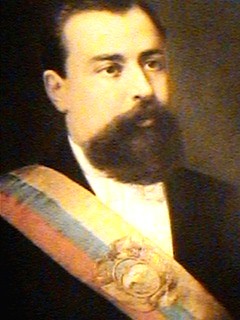 Leonidas Plaza Gutiérrez
Leonidas Plaza Gutiérrez
The school "Vicente Rocafuerte" (in Guayaquil) and the normals "Manuela Cañizares" and "Juan Montalvo" (in Quito) are initiated.
1902 July 7 - The first locomotive arrives to Alausí. Oct. 3 - The law requiring that all marriages be performed by State authorities to be valid is passed. The law allowing for divorce is passed. Nov. 23 - The "Colegio Nacional Maldonado" is inaugurated in Riobamba.
1903 The first automobile arrives in Quito.
1904 June 28 - Peruvian troops attack the Ecuadorian garrison of Torres-Causana in the eastern jungle region. Oct. 12 - The "Ley de Cultos", that defines the relations between the Catholic Church and the State, is passed.
1905 July 24 - The railroad reaches Riobamba. Sep. 1 - Lizardo GarcíaSorroza assumes the post of President of the Republic; Alfredo Baquerizo Moreno is the Vice-president.
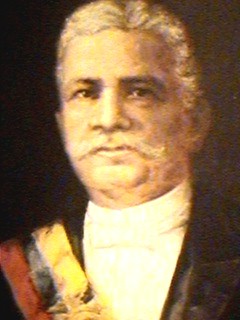 Lizardo García Sorroza
Lizardo García Sorroza
Dec. 31 - Eloy Alfaro directs a "coup d'état" against the government of Lizardo García.
1906
Jan. 1 - Emilio Maria Terán with other liberals take the army barracks
of Riobamba and proclaim Eloy Alfaro "Jefe Supremo" of the Republic. Jan.
1 - First publication of the daily "El Comercio" in Quito. Jan. 6 - Tulcán
supports Alfaro.
Jan. 16 - Eloy Alfaro takes the post of "Jefe Supremo"
after his troops defeat the government troops in Chasqui (Cotopaxi).
Jan. 19 - Guayaquil recognizes Eloy Alfaro as "Jefe Supremo." Oct. 9 -
Eloy Alfaro is elected Interim President by a Constituent Assembly.
Dec. 9 - An insurrection led by General Antonio Vega is suffocated by troops
under General Ulpiano Páez in Ayancay (between Azuay and Cañar);
Vega is captured and dies from a gunshot when taken to Cuenca.
The "liberal" batallion "Vargas Torres" loots the city of Loja.
Dec. 22 - The XII Constitution is passed in Quito. The Constitution of 1906, called "atheist" by the "Conservadores," establishes the separation of the Church from the State; the State is supreme. The post of Vice-president is eliminated.
The railroad arrives to Ambato.
1907 Jan. 1 - Eloy Alfaro is named President of the Republic by the Constituent Assembly. Apr. 25 - People of Quito mutiny in protest to the closure of registrations to vote; government troops kill two of the mutineers. July 19 - An attempt against the life of Alfaro is dwarfed in Guayaquil's Gubernatorial Palace.The leaders of the attempt are executed by a firing squad; in addition, one person (chosen by lot) of high social stature is executed for each of the eight guards that died.
Ago. - The price of cocoa falls drastically affecting
the economic power of the "gran cacaos" (rich producers and exporters of
cocoa); the crisis would reach its climax in 1922. Cocoa represents 67% of
all exports.
1908
June 25 - The railroad between Quito and Guayaquil is inaugurated.
Nov. 6 - The "Ley de las manos muertas" is passed; under
this law, real estate property of the clergy is confiscated to benefit public
assistance activities.
1910 Apr. 3 - The Consulate of Peru and a docked Peruvian merchant ship are attacked by civilians in Guayaquil. Apr. 24 - Alfaro assumes direct command of the Army to fortify the Gulf of Guayaquil in the event of a Peruvian invasion. The diplomatic intervention by the United States, Argentina and Brazil averts war.
Congress approves the confiscation and sale of lands adjacent to convents and monasteries to help pay for national defense.
1911
July 3 - General Emilio María Terán, who opposed the re-election
of Alfaro, is assassinated by Colonel Luis Quiroga in Quito. July 30 -
The "Junta Patriótica" asks the government of Alfaro to recognize
the election of Emilio Estrada as President.
Aug. 11 - Colonel Luis Quiroga is assassinated at the
penitentiary by supporters of Terán. Aug. 11 - A popular revolt forces
Alfaro to resign; Carlos Freile Zaldumbide, who is President of Congress
, assumes the post of "Encargado del Poder."
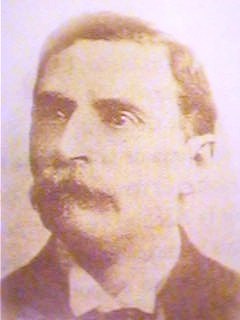 Carlos Freile Zaldumbide
Carlos Freile Zaldumbide
Sep. 1 - Emilio Estrada Carmona assumes the post of Constitutional President; there is no Vice-president.
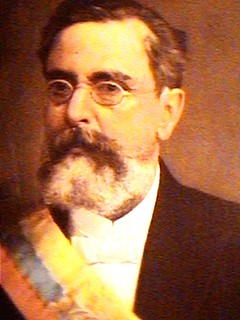 Emilio Estrada Carmona
Emilio Estrada Carmona
Dec. 21 - Estrada dies from cardiac arrest and Carlos Freile Zaldumbide is again "Encargado del Poder." Esmeraldas does not recognize Freile and declares Flavio Alfaro "Jefe Supremo." Dec. 28 - General Pedro J. Montero declares himself "Jefe Supremo" in Guayaquil; he then asks Eloy Alfaro to return from exile in Panama "... to turn your army over to you". Dec. 31 - Government troops under General Leonidas Plaza depart toward Guayaquil to suffocate the insurrection.
1912
Jan. 5 - Flavio Alfaro joins with Montero in Guayaquil.
Jan. 11 - Government troops under General Julio Andrade
defeat the troops of Montero and Flavio Alfaro in Huigra. Jan. 12 - Eloy
Alfaro debarks in Guayaquil.
Jan. 14 - Troops of Montero are defeated in Naranjito
by General Leonidas Plaza.
Jan. 18 - Troops of Montero and Flavio Alfaro are defeated
in Yaguachi by Andrade and Plaza. The military campaign left almost 3,000
dead, due largely to the use of machineguns. Jan. 22 - Montero and Plaza
reach an accord to end the war and provide safe-conduct to the "Alfaristas."
The government reneges on the agreement with Montero; General Eloy Alfaro,
General Flavio Alfaro, General Medardo Alfaro, General Pedro Montero, General
Ulpiano Páez, General Manuel Serrano, and Colonel Belisario Torres
are arrested in Guayaquil.
Jan. 25 - General Montero is assassinated by government
troops in Guayaquil.
Jan. 28 - By order of Freile, the Alfaros, Páez,
Serrano and the journalist Luciano Corral are incarcerated in Quito's penitentiary
("Penal García Moreno"). The government does not protect the prisoners
from an "organized mob" that invades the penitentiary and assassinates
the detained revolutionaries; the mob drags the bodies through the streets
of Quito and burn them at the Ejido.
Mar. 5 - The Military Garrison of Quito overthrows Carlos Freile Zaldumbide and give the command of the country to the President of the Chamber of Deputies Francisco Andrade Marín. Mar. 6 - General Julio Andrade, presidential canddidate opposing Plaza, is assassinated during a mutiny at the police barracks of Quito. Sep. 1 - General Leonidas Plaza Gutiérrez assumes the post of President of the Republic.
1913 Sep. 23 - The "Revolución Conchista" of "Reinvindicaciones" (Recoveries) by "Alfaristas", against the government of Leonidas Plaza, begins; forces of "Liberales" composed of blacks under Colonel Carlos Concha Torres take the barracks of Esmeraldas. Rebellious blacks fight against the government forces in Guayabo. Dec. 10 - Revolutionaries take Esmeraldas.
1914 Feb. 10 - The city of Esmeraldas is shelled by government ships. Government forces land in Atacames (25th of February) and retake Esmeraldas (14th of March). Apr. 12 - Colonel Enrique Vásquez Concha dies in the battle of Camarones (Esmeraldas).
The first oil well is drilled in Ancón (Santa Elena Peninsula).
1916 Jul. 15 - The "Tratado Muñoz Vernaza-Suárez" is signed; under the terms of this Treaty, Ecuador cedes to Colombia the territory between the rívers Caquetá and Putumayo. Sep. 1 - Alfredo Baquerizo Moreno (a "Liberral") assumes the post of President of the Republic; there was no Vice-president.
 Alfredo Baquerizo Moreno
Alfredo Baquerizo Moreno
Baquerizo Moreno grants amnesty to the "Conchista" revolutionaries, repeals the law requiring prison for unpaid debts, and limits the work day for employees to eight hours.
1920 Sep. 1 - José Luis Tamayo Terán assumes the post of President of the Republic; there was no Vice-president.
 José Luis Tamayo Terán
José Luis Tamayo Terán
Nov. 4 - The airplane "Telégrafo I", brought by ship to Ecuador, flies from Guayaquil to Quito piloted the Italian Elia Liuts.
1922 Mar. 24 - Colombia cedes to Peru the territories ceded by Ecuador to Colombia in 1916. Nov. 15 - A public demonstration by workers in Guayaquil is repressed by the police and the army when it turns into a looting spree; hundreds of persons are killed and wounded. Dec. 3 - The first Evangelist church is inaugurated in Quito.
1923 Sep. 13 - Indian uprising in the hacienda "Leito" (Tungurahua) is caused by work increases and the rise of legal hours at work. At the request of the owner, the uprising is suffocated by the government; almost one hundred Indians are massacred.
1924 Sep. 1 - Gonzalo S. Córdova y Rivera assumes the post of President of the Republic.
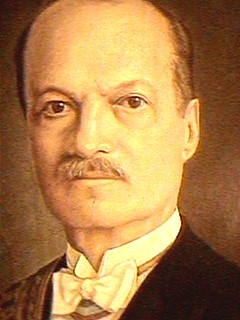 Gonzalo S. Córdova y Rivera
Gonzalo S. Córdova y Rivera
Sep. 12 - Government forces suffocate a rebellion in San José de Ambi (Imbabura); the rebellion was lead by the "Conservadores" Jacinto Jijón y Caamaño and Manuel Sotomayor y Luna.
1925 July 9 - "Revolución Juliana": The military barracks of Guayaquil are taken by officers lead by Sergeant Major Idelfonso Mendoza Vera. The government authorities, the military chiefs, and the administrators of the banks are arrested and a "Junta Militar de Gobierno" is established. The head of the "Banco Comercial y Agrícola", Francisco Urbina Jado, is accused of having caused the deterioration of the econony. Urbina Jado had illegally printed vast sums of paper currency without the required backing in gold and had used the economic power of the bank to exercise enormous influence in the country's policies. Later the bank was severely fined and liquidated.
Jul. 10 - In Quito, President Córdova is arrested by Major Carlos Guerrero and eight officer with 50 soldiers from the "Pichincha" battalion. A "Junta Suprema Militar" is formed (presided by Lieutenant Colonel Luis Telmo Paz y Miño) that cedes the government to a " Junta de Gobierno Provisional" composed of José Rafael Bustamante, Luis Napoleón Dillon, General Francisco Gómez de la Torre, and General Moisés Oliva; on July 13th the Junta is expanded with Pedro Pablo Garaicoa and Francisco J. Bolona; on July 14th General Moisés Oliva is replaced by Francisco Arízaga Luque. Aug. - The "Junta Militar de Gobierno" of Guayaquil is in disagreement with the "Junta de Gobierno Provisional."
The autonomy of universities is recognized. The personal identity card is created.
1926 Jan. 10 - The first "Junta de Gobierno Provisional" is dissolved and the military elect a "second junta" composed of Isidro Ayora, Humberto Albornoz, Julio E. Moreno, Adolfo Hidalgo Nevares, Homero Viteri Lafronte, José Antonio Gómez Gault and Pedro Pablo Eguez Baquerizo. Apr. 1 - The Army names Isidro Ayora Interim President; Isidro Ayora Cueva assumes the post on April 3rd. July - Ayora is named Provisional President by the Army.
1927 July 9 - The "Banco Central del Ecuador," the "Superintendencia de Bancos," the "Banco Hipotecario," the "Contraloría General," the "Caja de Pensiones" and other entities of public administration are created. Nov. - The "Departamento de Aviación" is created.
1929 Mar. 26 - The XIII Constitution is passed in Quito; this Constitution explicitly grants women the right to vote. Apr. 17 - Isidro Ayora Cueva , elected by the Constituent Assembly, assumes the post of Constitutional President; the was no Vice-president.
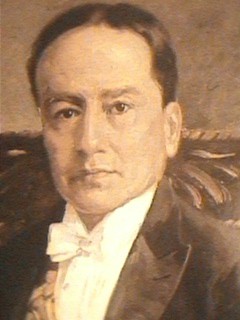 Isidro Ayora Cueva
Isidro Ayora Cueva
1931 Aug. 24 - Street demonstrations against the government and the rebellion of an army battalion in Quito, compel Ayora to resign. Colonel Luis Larrea Alba, Minister of Government, remains to run the government as "Encargado del Poder."
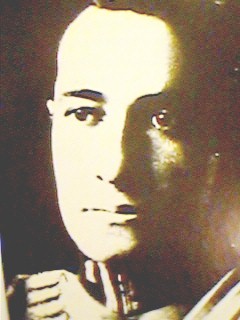 Luis Larrea Alba
Luis Larrea Alba
Oct. 15 - Larrea Alba, not supported by enough troops in Quito, fails in his intent to declare himself Dictator - seven die. Alfredo Baquerizo Moreno, President of the Senate, is named "Encargado del Poder."
1932 Aug. 20 - The president-elect Neptalí Bonifaz Ascázubi is disqualified by Congress because he is attributed to have Peruvian nationality.
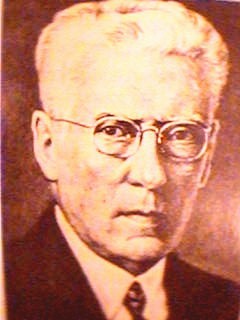 Neptalí Bonifaz Ascázubi
Neptalí Bonifaz Ascázubi
Aug. 27 - The Garrison of Quito rebels in favor of Bonifaz. Aug. 28 - Alfredo Baquerizo Moreno names Carlos Freile Larrea Minister of Government so that Freile Larrea may, under the law, be the new "Encargado del Poder". Aug. 28 - Quito is besieged by troops of "Liberales" from the North and South who are opposed to Bonifaz.
Aug. 29/Sep. 1 - Guerra civil de los "cuatro días"
: Four days of combat and the "Bonifacistas" are defeated after 1,000
persons are killed - mainly laborers, called "Compactados", supporters
of Bonifaz. Aug. 31 - Freile Larrea resigns without a successor.
Sep. 2 - Alberto Guerrero Martínez, last President of the
Senate, becomes "Encargado del Poder" and directs the new elections for
President.
Dec. 5 - Juan de Dios Martínez Mera assumes
the post of Constitutional President.
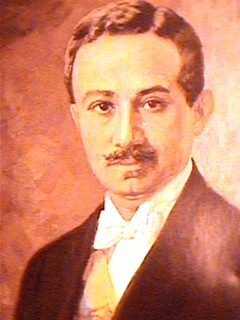 Juan de Dios Martínez Mera
Juan de Dios Martínez Mera
1933 Oct. 17 - The Senate disqualifies Juan de Dios Martínez Mera declaring the Presidency "vacant" due to electoral fraud. Oct. 20 - Abelardo Montalvo, Minister of Government, is appointed "Encargado del Poder." New elections for President are convened.
1934 Sep. 1 - José María Velasco Ibarra assumes the post of Constitutional President; the post of Vice-president does not exist.
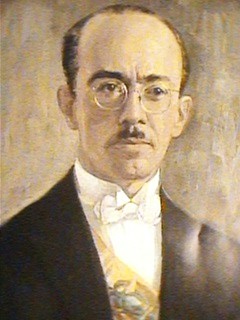 José Maria Velasco Ibarra
José Maria Velasco Ibarra
A law declares the Galapagos islands a National Preserve. The Social Security of Ecuador is organized.
1935 Aug. 20 - Velasco attempts to dissolve Congress without prior consultation with the Army to obtain its support. Aug. 21 - Velasco is arrested by army officers and resigns; later he states: "I rushed over the bayonets." Aug. 21 - Antonio Pons, Minister of Government, assumes the post of "Encargado del Poder." Sep. 26 - Pons surrenders the government to a "Junta" of military officers who, ignoring Congress, designate Federico Páez "Encargado del Mando Supremo."
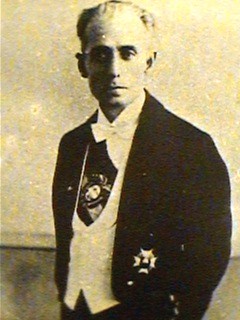 Federico Páez
Federico Páez
1936 Nov. 28 - "Las cuatro horas" (The four hours): The Regiment "Calderón", fearing disbandment, rebels in Quito; soldiers kill their commanding officer and other officers. After hours of combat in the streets the rebellion is harshly suffocated.
1937 Aug. 10 - Páez convenes a Constituent Assembly so that it would declare him Titular President. Oct. 23 - General Alberto Enríquez Gallo , Minister of Defense, dissolves the Assembly and declares himself "Jefe Supremo;" Páez leaves the country. Enríquez Gallo declares the Constitution of 1906 in force and repeals the "Ley de Seguridad Social" imposed by Páez.
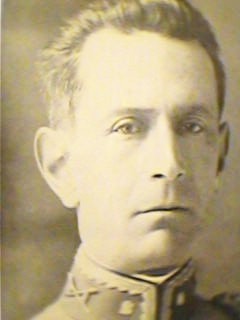 Alberto Enríquez Gallo
Alberto Enríquez Gallo
1938 Aug. 5 - The "Código del Trabajo" becomes Law. Aug. 10 - General Alberto Enríquez convenes a new Constituent Assembly that elects Manuel María Borrero González Constitutional Interim President. Dec. 2 - Borrero sends his resignation to the Assembly; the Assembly elects Aurelio Mosquera Narváez President of the Republic.
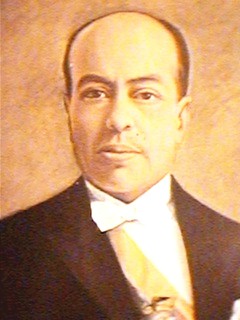 Aurelio Mosquera Narváez
Aurelio Mosquera Narváez
Dec. 2 - The XIV Constitution is passed in Quito. Dec. 14 - Supported by the Police and the Army, President Mosquera dissolves the Constituent Assembly and convenes an Extraordinary Congress.
1939
Feb. - Congress declares in force the Constitution of 1906.
Nov. 17 - Mosquera dies from an attack of uremia. Nov.
18 - Carlos Alberto Arroyo Del Río, President of the Senate,
assumes the post of "Encargado del Poder Ejecutivo." Dec. 11 - Arroyo resigns
in favor of the President of the Chamber of Deputies Andrés Fernández
de Córdova Nieto.
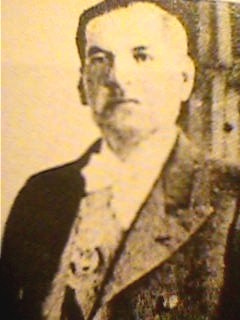 Andrés Fernández de Córdova Nieto
Andrés Fernández de Córdova Nieto
1940 Aug. 10 - Córdova resigns and Julio Enrique Moreno Peñaherrera , President of the Senate, is the new "Encargado del Poder".
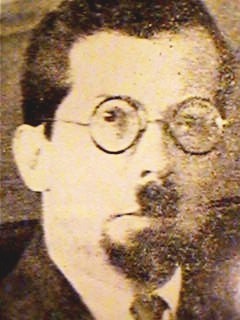 Julio Enrique Moreno Peñaherrera
Julio Enrique Moreno Peñaherrera
Arroyo wins the elections. Sep. 1 - Carlos Alberto Arroyo Del Río assumes the post of President of the Republic; the post of Vice-president does not exist.
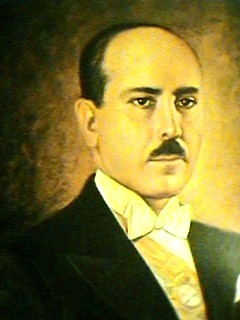 Carlos Alberto Arroyo del Río
Carlos Alberto Arroyo del Río
1941 The Government of Brazil invites the Government of Ecuador to a conference relating to the Amazon Region; Peru protests because it does recognize Ecuador's rights in the Amazon Region. July 5/23 - Peruvian soldiers attack and begin to invade Ecuador through El Oro. July. 23 - Battle of Zarumilla. July 24 - Argentina, Brazil and the United States request the war be stopped. July 25 - Naval combat in the Jambeli Channel. July 29 - El Oro is occupied. Aug. 11 - Zapotillo and Rocafuerte are occupied. Aug. 14 - Military Attachés of Brazil, Argentina and the United States arrive to the war zone. Sep. 6/7 - Last of Peruvian attacks. Oct. 2 - The "Convenio de Talara" fixes a demilitarized zone in the invaded territory.
1942 Jan. 29 - The "Protocolo de Río de Janeiro" is signed by Ecuador and Peru; it is recognized as territory of Ecuador in the Amazon Region only what it had in active possession. The Ecuadorian chancellor Julio Tobar Donoso got Peru to acknowledge as Ecuadorian territory 2,481 square kilometers between the mouth of the Aguarico River and the trapezoid of Sucumbios.
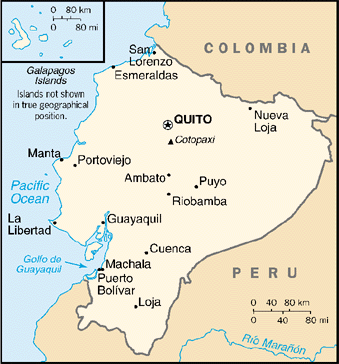 Ecuador after the "Protocolo de Rio de Janeiro".
Ecuador after the "Protocolo de Rio de Janeiro".
Feb. 26 - Congress aproves the "Protocolo de Río de Janeiro." Feb. 28 - President Arroyo ratifies the "Protocolo de Rio de Janeiro."
The government breaks diplomatic relations with Japan, Germany and Italy. The United States is allowed to establish naval and army bases in Galapagos and in the Santa Elena Peninsula to protect the Panama Canal. The German School in Quito is closed and German nationals are detained and turned over to intelligence officers of the United States for internment in the United States.
1943
May 28 - Armed civilians attack the Government Palace demanding the resignation
of President Arroyo; some "Carabineros" of the guard are killed.
July 5 - The "Escuela de Policia" is established.
1944
May 28 - "La Gloriosa": Members of the Garrison of Guayaquil arrest their
superior officers and, joining with civilians, attack the police barracks
and kill almost a hundred "Carabineros." In Riobamba some "Carabineros"
are massacred and dismembered. May 31 - President Arroyo resigns "to prevent
the horrors of a civil war." June 1 - Revolutionaries and crowds acclaim
José Maria Velasco Ibarra "Jefe Supremo." Velasco convenes
a Constituent Assembly for the 10th of August.
Aug. 10 - José María Velasco Ibarra
is elected Constitutional President; there is no Vice-president.
Velasco accuses members of the government of Arroyo Del Río of treason. Ecuador establishes diplomatic relations with the socialist countries.
1945 Mar. 6 - The XV Constitution is passed in Quito.
The government declares war on Germany, Japan and Italy; assets owned by citizens of these countries are expropiated without compensation and later sold to Ecuadorians. Ecuador joins the United Nations Organization. Diplomatic relations are established with the Soviet Union.
Jul. 14 - Arbitration Finding by Braz Dias de Aguiar:
Captain Braz Dias de Aguiar, a Brazilean, presents his study of the disputed
zone between Ecuador and Peru in the "Cordillera del Condor" to the guarantor
countries of the Rio de Janeiro Protocol; he recommends that the territorial
border pass over the summits of the mountains.
1946
Mar. 30 - With support from the Minister of Government, Carlos Guevara
Moreno, Velasco orchestrates a "coup d'état;" José Maria
Velasco Ibarra ratifies himself as President of the Republic.
Aug. - A Constituent Assembly composed in its majority by socialists and
communists elects Velasco Ibarra President.
Velasco convenes a second Constituent Assembly that is predominantly composed of clergy-patronizing "Conservadores". Aug. 10 - José María Velasco Ibarra continues in power as a Constitutional President; Mariano Suárez Veintimilla is the Vice-president. Dec. 31 - The XVI Constitution is passed in Quito; this Constitution reinstates the post of Vice-president of the Republic, creates the "Tribunal Supremo Electoral" and establishes as condition of citizenship to be at leat 18 years old and be able to read and write.
1947 Aug. 23 - By order of Colonel Carlos Mancheno Cajas, Minister of Defense, a group of army officers arrest Velasco and force him to name Carlos Mancheno Cajas President of the Republic; Velasco resigns and leaves the country.
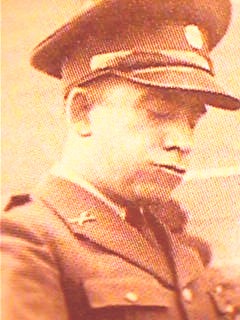 Carlos Mancheno Cajas
Carlos Mancheno Cajas
Troops sent by Mancheno to the South are neutralized at
the "Puente del Socavón" of Ambato and Yambo by "pro-Constitution"
troops under Colonel Angel Baquero Dávila; one soldier dies.
Sep. 2 - Mancheno is removed from office and Mariano Suárez Veintimilla
(Vice-presidente of Velasco) assumes the post of Constitutional President.
Sep. 15 - Suárez resigns before an Extraordinary Congress convened
to a elect a President. Sep. 16 - Carlos Julio Arosemena Tola
assumes the post of Constitutional President; José Rafael Bustamante
is the Vice-president.
Ecuador brakes diplomatic relations with the Soviet Union.
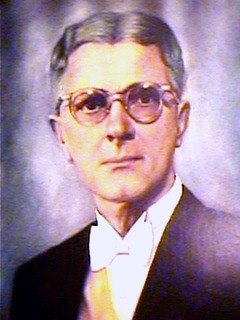 Carlos Julio Arosemena Tola
Carlos Julio Arosemena Tola
1948 Sep. 1 - Galo Plaza Lasso (son of General Leonidas Plaza Guitiérrez and born in the United States) assumes the post of Constitutional President; Manuel Sotomayor y Luna is the Vice-president.
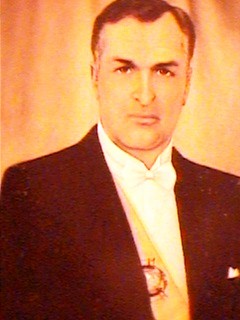 Galo Plaza Lasso (Famous words:"The Oriente is a myth")
Galo Plaza Lasso (Famous words:"The Oriente is a myth")
The "Ley de Régimen Monetario" is passed and the "Junta Monetaria" is created and placed under the direction of the Central Bank.
1949 Aug. 5 - Earthquake in the provinces of Tungurahua, Chimborazo and Cotopaxi; Pelileo is completely leveled and two thirds of the buildings in Ambato collapse; it is estimated that more than 6,000 inhabitants died.
1950 Jul. 15 - Carlos Guevara Moreno, Rafael Coello Serrano and other critics of the government of Plaza are imprisoned. Nov. 29 - First national census establishes that Ecuador has 3,211,916 inhabitants; Quito has 209,932 and Guayaquil 256,966.
1952 Mar. 22 - Violent repression by the government to a peaceful "Velasquista" demonstration in Quito results in one death and many wounded. Sep. 1 - José María Velasco Ibarra assumes the post of Constitutional President; Alfredo Chiriboga is the Vice-president.
1955 The "Comisión Nacional de Valores" is created: which later will become the "Corporación Financiera Nacional." The youngster Isidro Guerrero is killed when a strike by students is suffocated. Velasco suspends the "Sindicato de Ferroviarios."
1956 Aug. 6 - Velasco suffocates an insurrection in Manabi led by Lieutenant José Maria Plaza; Plaza is opposed to the president-elect Ponce Enríquez. Sep. 1 - Camilo Ponce Enríquez assumes the post of Constitutional President; Francisco Illingworth Icaza is the Vice-president.
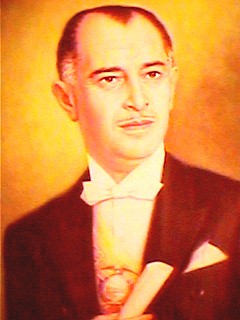 Camilo Ponce Enríquez
Camilo Ponce Enríquez
1957 Dec. 17 - The Galapagos islands are made a province for a second time. The railroad from Ibarra to San Lorenzo is inaugurated.
1959 Jan. 1 - The "Seguro de Cesantía" (unemployment insurance) is established for private employees and laborers.
Rebellions in Portoviejo and Guayaquil, brought by an
economic crisis, are drastically repressed; dozens of people are killed and
many more are wounded.
July 20 - Galapagos is declared a National Park.
1960 Mar. 11 - The "Ley de Propiedad Horizontal" is passed. Sep. 1 - José Maria Velasco Ibarra assumes the post of Constitutional President; Carlos Julio Arosemena Monroy is the Vice-president. Sep. 29 - President Velasco Ibarra proclaims the "Protocolo de Río de Janeiro" of 1942 nullified.
1961 Protests against Velasco by crowds in Cuenca (Nov. 3) are followed by similar demonstrations by students in Guayaquil (Nov. 5); eleven people die and 14 are wounded. Nov. 6 - Vice-president Carlos Julio Arosemena is arrested by order of President Velasco. The Cabinet Ministers resign. Nov. 7 - Units of the army depose Velasco and entrust the government to Camilo Gallegos Toledo (President of the Supreme Court); while Arosemena is in jail, Congress decides for continuity under the Constitution after aircraft from the Air Force buzz Parliament. Under the Constitution, Carlos Julio Arosemena Monroy (son of Carlos Julio Arosemena Tola) is the Constitutional President from November 7; but he does not assume the post until November 9. Reinaldo Varea Donoso is the Vice-president.
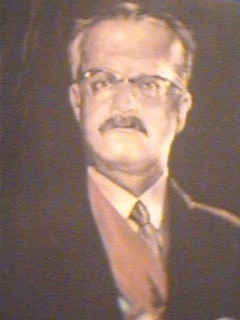 Carlos Julio Arosemena Monroy
Carlos Julio Arosemena Monroy
The "Comisión Nacional de Reforma Agraria" is created by Executive Decree.
1962 Apr. 3 - The diplomatic relations with Cuba, Poland and Czechoslovakia are severed.
Ecuador joins the "Asociación Latinoamericana de Libre Comercio". The "Ley de Inquilinato" is promulgated. A national population totals 4,581,476 inhabitants.
1963
Jul. 11 - A "Junta Militar de Gobierno" (Captain Ramón Castro
Jijón, Lieutenant Colonel Guillermo Freire Posso, Colonel Luis Cabrera
Sevilla and Colonel Marco Gándara Enríquez) deposes President
Arosemena and exiles him. The "coup d'état" was pushed by a foreign power. The discovery of oil deposits in the Oriente were an incentive.
 Junta Militar de Gobierno
Junta Militar de Gobierno
A Decree declares the Communist Party illegal.
1964 Jan. - Colonization of Galapagos is prohibited. July 11 - The "Ley de Reforma Agraria y Colonización" is passed; under this law, the "huasipungo" is abolished and land can be reverted to indigenous communities.
The North American Texaco-Gulf Consortium signs a contract for the exploitation of petroleum.
1965
Mar. 3 - The "Ley de Registro Civil, Identificación y Cedulación"
is passed.
May 12 - The reconstruction of the Pan-American North
highway begins.
The "Superintendencia de Compañías" is created.
1966
Mar. 23 - Army paratroopers suffocate a revolt at the "Universidad Central
de Quito." Mar. 26 - A woman is killed after being hit by a tear
gas canister.
Mar. 29 - The "Junta Militar de Gobierno," rejected by
the people, resigns; a "Junta de Notables" in Quito designates Clemente
Yerovi Indaburú Interim President.
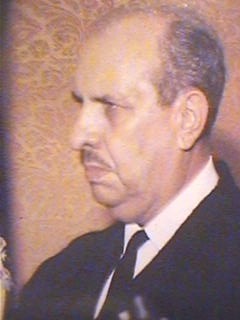 Clemente Yerovi Indaburú
Clemente Yerovi Indaburú
Nov. 16 - A Constituent Assembly names Otto Arosemena Gómez Interim President.
1967 Mar. - The Texaco-Gulf Consortium confirms the first oil well in the eastern jungles. Apr. 14 - At the Reunion of Presidents of the American Republics in Punta del Este, Uruguay, Presidente Arosemena acuses the United States of commercial imperialism. May 25 - The Constituent Assembly passes the XVII Constitution in Quito and ratifies Otto Arosemena Gómez as the Constitutional President; there is no Vice-president.
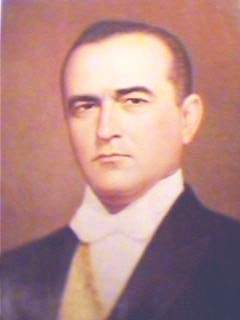 Otto Arosemena Gómez
Otto Arosemena Gómez
1968 Sep. 1 - José María Velasco Ibarra assumes the post of Constitutional President; Jorge Zavala Baquerizo is the Vice-president. July 30 - A student is killed by rifle fire and 6 more are wounded during clashes between students and troops.
1970
Jun. 22 - José María Velasco Ibarra declares himself
Dictator. Velasco attaches the foreign currency in the free market and
then devalues the Sucre.
Haciendas in the coastal region that are exploited by
precarious means are expropriated.
1971 Fidel Castro visits Guayaquil. At the United Nations, Ecuador votes for the admission of Communist China. The Unites States suspends the sale of arms to Ecuador. The construction of the Balao-Esmeraldas oil pipeline begins.
1972 Feb. 15 - The "Carnavalazo": Velasco Ibarra is overthrown by the Army and exiled; General Guillermo Rodríguez Lara assumes the Presidency. The "coup d'état" was organized by the intelligence service of a foreign power.
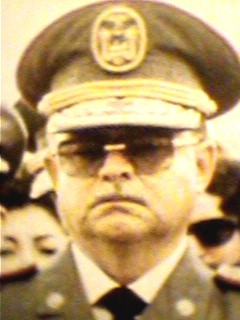 Guillermo Rodríguez Lara
Guillermo Rodríguez Lara
The "Ley de Hidrocarburos" is passed. Aug. 1 - The export of petroleum begins through the Balao-Esmeraldas pipeline.
The long-standing debt to English creditors for loans during the war for Independence is finally paid. The "Ley de Aguas" is dictated..
1973 June. - Ecuador joins the "Organización de Países Exportadores de Petróleo" (OPEC). The "Segunda Ley de Reforma Agraria" is passed. The Archipielago of Columbus (Galapagos) is again recognized as a province.
1974 Census shows that Ecuador has 6,5000,845 inhabitants.
1975 Aug. 31 - General Raúl González Alvear directs an attempt to overthrow General Rodríguez Lara in Quito; the rebellion (known as "La Funeraria") is crushed after 17 soldiers are killed and 80 are wounded. A nation-wide strike breaks out in protest to the government of Rodríguez Lara.
1976 Jan. 11 - General Rodríguez Lara is forced to resign. Jan. 12 - The government is taken over by a "Consejo Supremo de Gobierno" composed of Vice-Admiral Alfredo Poveda Burbano and General Guillermo Durán Arcentales and General Luis Leoro Franco.
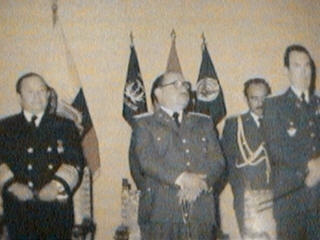 Consejo Supremo de Gobierno
Consejo Supremo de Gobierno
The "Consejo Supremo" creates three commissions to design: a project for a new Constitution, a project of reforms to the Constitution of 1945 and Law of Elections and of Political Parties, and a Statute for a Referendum.
1977 The oil refinery begins to function in Esmeraldas. The "Ley de Colonización" for the land in the eastern jungles is passed. Oct. 18 - A strike by the laborers at the "Ingenio Azucarero Aztra" (a State enterprise in Cañar), caused by denial of pay increases, is harshly suffocated by the police; of the many missing in a canal, only 23 corpses are identified.
1978
Jan. 15 - The Referendum supports the basis for a new Constitution.
Jul. 16 - The presidential elections by popular vote and
under new rules begin; Jaime Roldós Aguilera and Sixto Durán-Ballén
are declared winners of the first round of the elections.
Nov. 29 - Abdón Calderón Muñoz, leader of the "Frente Radical Alfarista" and critic of the military, is shot in Guayaquil and days later dies in Miami (Florida) from his wounds; a subsequent investigation finds that high-ranking police officers organized the assault.
The "Flota Naviera Nacional" for the transport of petroleum is created.
1979 Jan. 15 - The XVIII Constitution is passed in Quito; the Constitution was approved by Referendum on the 15th of January 1978. Aug. 10 - Jaime Roldós Aguilera assumes the post of Constitutional President; Osvaldo Hurtado Larrea is the Vice-president.
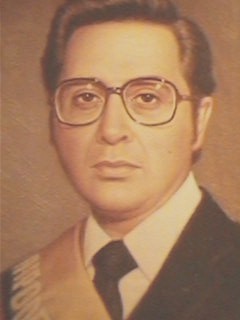 Jaime Roldós Aguilera
Jaime Roldós Aguilera
The fifteenth monthly salary per year is instituted for salaried employees. The normal work week is limited to 40 hours starting October 1980.
1981 Feb. 4 - After various armed clashes in Paquisha ("Cordillera del Cóndor") leave dozens of soldiers dead, a halt to hostilities is agreed in Washington by Ecuador and Peru. May 24 - President Roldós is killed in an aircraft accident near the Huayrapungo mountain; Osvaldo Hurtado Larrea (Vice-president of Roldos) assumes the post of Constitutional President.
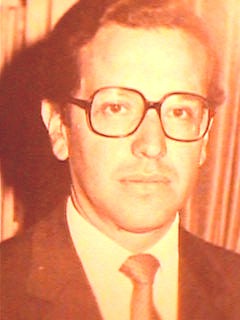 Osvaldo Hurtado Larrea
Osvaldo Hurtado Larrea
Dec. 9 - Nationwide strike.
1982 Mar. - The United States asks the Government of Ecuador to allow a U.S. military base in Galapagos; Ecuador declines the request. Sep. 22/23 - The fifth nation-wide strike.
The government reduces the subsidy on gasoline and wheat. Oct. - After grave disturbances protesting cost increases to the consumer, the government declares the country under national emergency and decrees curfew for five days. Dec. - The country is subjected to huge floods.
1983 Mar. - Nation-wide strike; the country is totally paralyzed for two days.
1984 Jan. 29 - León Febres-Cordero an Rodrigo Borja win the first round of the elections. Aug. 10 - León Febres-Cordero Rivadeneira assumes the post of Constitutional President; Blasco Peñaherrera Padilla is the Vice-president.
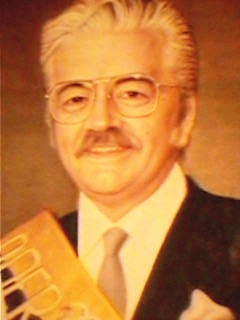 León Febres-Cordero Rivadeneira (Slogan:"Bread, shelter and
jobs")
León Febres-Cordero Rivadeneira (Slogan:"Bread, shelter and
jobs")
Nation-wide strike by the "Frente Unitario de Trabajadores."
1985 Nation-wide strike for two days. Aug. 8 - Nahim Isaías, a wealthy banker, is abducted by members of the revolutionary group "Alfaro vive ....". Sep. 2 - Isaías and his abductors are killed by gunfire when the government tries to free him.
1986 Mar. 7 - Adducing ethical motives, General Frank Vargas and other members of the Air Force rebel against the government at the Air Base in Manta; Vargas and Febres-Cordero reach an agreement. Mar. 13 - Accusing Febres-Cordero of not fulfilling the agreement of Manta, Vargas initiates another rebellion at the Air Base of Quito. Mar. 14 - By order of Febres-Cordero, army troops surround the base, suffocate the rebellion, and General Vargas is arrested. Aug. - United States soldiers arrive in Ecuador to build a road in Manabí. Sep. - Nation-wide strike by workers.
León Febres-Cordero ignores the amnesty granted by Congress to General Frank Vargas.
1987 Jan. 16 - Commandos from the Air Force Special Forces detain President Febres-Cordero at the Air Base of Taura. Under threat of death, the President agrees to order the release of Vargas and promises the commandos they will not be punished. Jan. - Congress asks Febres-Cordero to resign.
The president dissolves the Special Forces unit of the Air Force and orders the prosecution of 30 of its members. Mar. 5 - An earthquake destroys a great portion of the oil pipeline. Apr. - Troops from the United States Army Corps of Engineers build a road in the zone affected by the earthquake and assist victims. Nov. - U.S. Army troops leave Ecuador by request of the Ecuadorian Congress.
1988
Jan. 31 - Rodrigo Borja and Abdalá Bucaram win the first round of
the presidential elections. More strikes. Febres-Cordero declares a state
of emergency.
Jun. 10 - Army troops stop disturbances at the "Escuela
Politécnica Nacional."
July 6 - Guayaquil is shaken by political violence; a
student dies from gunfire.
Aug. 10 - Rodrigo Borja Cevallos assumes the post
of Constitutional President; Luis Parodi Valverde is the Vice-president.
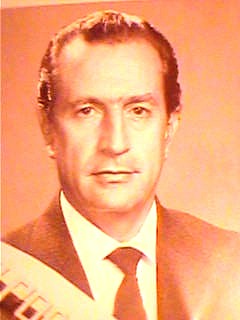 Rodrigo Borja Cevallos (Slogan: "Now is the people's turn")
Rodrigo Borja Cevallos (Slogan: "Now is the people's turn")
Dec. 1 - President Borja invokes the "Ley de Gracia" and commutes the penalties to the commandos that sequestered President Febres-Cordero at Taura.
Febres-Cordero is accused of having used funds from the Central Bank for a paramilitary group.
1989 Jan. - Leaders of the revolutionary group "Afaro vive" reach an accord with the government and surrender their arms. Dec. 17 - The President of Peru, Alan García, travels to Ecuador to attend the "Reunión de Galápagos."
1990 Jan. - The Supreme Court issues an order to arrest León Febres-Cordero, accused of peculation to the State. Apr. - Twelve Huaoranis communities are adjudicated 6,000 hectares near the Napo River. May 29 - The Santo Domingo Church in Quito is peacefully invaded by Indians demanding a solution to conflicts of titles to lands. Jun. 4 - Indian uprising in the highlands because of ignored land title claims. Aug. - León Febres-Cordero is declared innocent. Nov. - The Catholic Church proposes to acquire land for Indians if allowed to buy ten million dollars of Ecuador's foreign debt.
1991 Feb. / July - "Waves" of strikes in almost all the provinces; health centers, hospitals, and by public school teachers who demand payment of their salaries and benefits.
1992 Jan. 9 - The President of Peru, Alberto Fujimori, arrives in Quito to renew the dialog (started December 3rd at the Meeting of Cartagena) with President Borja over the border dispute. May - Sixto Durán-Ballén and Jaime Nebot Saadí win the first round of the presidential elections. Aug. 10 - Sixto Durán-BallénCórdovez (born in the United States) assumes the post of Constitutional President; Alberto Dahik Garzozzi is the Vice-president.
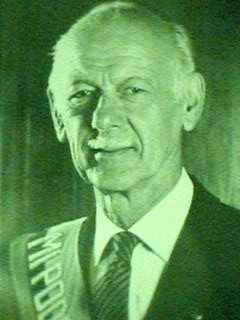 Sixto Durán-Ballen Córdovez (Slogan: "Not one step backwards")
Sixto Durán-Ballen Córdovez (Slogan: "Not one step backwards")
Sep. 14 - Disturbances in Guayaquil, caused by the increase of busfare, are harshly suffocated. Dec. 18 - The President of Peru, Alberto Fujimori, arrives in Salinas to meet informally with President Durán-Ballén in Bahia de Caráquez; territorial problems are discussed.
1993 Mar. 29 - "La Josefina" Disaster: Over 30 million cubic meters of the hill Tamuga slide and block the flow of the Cuenca and Jadán rivers (at the border of Cañar and Azuay); the largest producer of electricity, the Paute hydroelectric plant, and surrounding towns are at imminent risk of destruction. Apr. 30 - Soldiers breach the obstruction at "La Josefina" with anti-tank rockets; the rushing waters partially destroy the towns of Paute, Méndez, and other small towns.
May 26 - Protesting the economic policies of the regime of Durán-Ballén, the "Frente Unitario de Trabajadores" initiates a second strike since the President took office.
1995 Crossfire in the Cenepa ("Cordillera del Cóndor") when a Peruvian patrol confronts an Ecuadorian patrol. The Peruvian offensive begins against the Detachments Soldado Monge, Teniente Ortiz, Coangos, Cueva de los Tayos, Tiwintza and Etza. Jan. 31 - Ecuador and Peru accord to a cease-fire. Feb. 16/22 - Hostilities resume and the military observers from the guarantor countries to the "Protocolo de Río de Janeiro" abandon the combat zone.
Feb. 28 - Ecuador and Peru sign the "Declaración de Montevideo", which reaffirms the peace process and calls for an immediate cease-fire as agreed to in the "Declaración de Paz de Itamaratí" on the 17th of February. Mar. 27 - The troops are withdrawn from both sides of the disputed border area. In the conflict there were 31 Ecuadorian soldiers killed and many more Peruvians; in addition, Peru lost 9 aircraft and Ecuador lost two.
Oct. 12 - Vice-president Alberto Dahik, accused of peculate of "Fondos Reservados," resigns and flees to Costa Rica after the President of the Supreme Court issues a judgement for preventive detention. Oct. 19 - Eduardo Peña Triviño assumes the post of Vice-president.
1996 May - Abdalá Bucaram and Jaime Nebot Saadí win the first round of the presidential elections. Aug. 10 - Abdalá Bucaram Ortíz assumes the post of Constitutional President; Rosalía Arteaga Serrano is the first woman that exercises the post of Vice-president of the Republic. Bucaram does not reside in the Carondelet for fear of "ghosts".
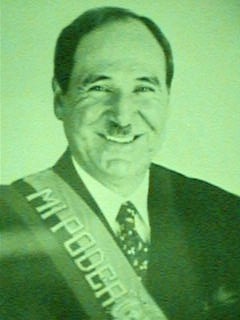 Abdalá Bucaram Ortíz (Slogan: "With a single touch")
Abdalá Bucaram Ortíz (Slogan: "With a single touch")
1997 Feb. 5 - A country-wide shutdown is organized by the political parties, businesses and citizens who are displeased with the economic policies and corruption of the Bucaram regime. Feb. 6 - Congress, in an Extraordinary Session, dismisses Bucaram for his incapacity to govern, declares the Presidency vacant, and designates (by simple majority) the President of Congress, Fabián Alarcón Rivera, as the Interim President of the Republic; Bucaram does not recognize the resolution made by Congress.
Feb. 7 - Vice-president Rosalía Arteaga Serrano proclaims herself President. President Bucaram abandons the Carondelet Palace and goes to Guayaquil. There are three personas that claim the Presidency. Feb. 8 - The Armed Forces no longer back Bucaram. Feb. 9 - By request of Alarcón, Congress leaves without effect his designation of Interim President of the Republic; Congress entrusts the presidency temporarily to Rosalía Arteaga Serrano; Alarcón returns to his post of President of Congress.
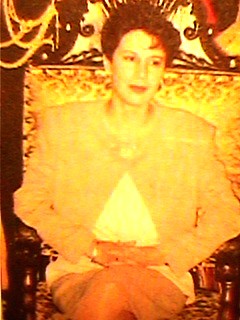 Rosalía Arteaga Serrano (Famous words: "Why not me?")
Rosalía Arteaga Serrano (Famous words: "Why not me?")
Feb. 11 - Bucaram leaves Guayaquil into exile in Panama. Fabián Alarcón Rivera is elected Interim President of the Republic by two thirds of the Congress and takes possession of the post that same day; the Armed Forces recognize Alarcon. Rosalía Arteaga returns to the post of Vice-president.
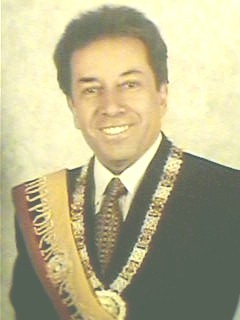 Fabián Alarcón Rivera
Fabián Alarcón Rivera
Mar. - Enormous peculates of the "Fondos Reservados" and extensive extortions are discovered to have been made by members of the government of Bucaram; some members of Congress are accused of having illegally benefited from funds belonging to the State. May 8 - Congress disqualifies 17 deputies for alleged implication in the illegal use of public funds. May 25 - A "Consulta Popular" votes 74% in favor of the removal of Bucaram and appointment of the Interim President.
The atmospheric activity named "El niño" creates huge floods in the coastal regions; the floods cause many to drown and destroys many crops, homes, roads and bridges.
1998 July
12 – Jamil Mahuad Witt, Mayor of Quito, is declared winner of the presidential
elections. Aug. 4 - Eathquake in Bahia. Aug. 10 - A Constituent Assembly
issues the XIX Constitution in Quito; under this Constitution, starting
with the year 2003 the new president will take possession of his post in
January. Aug. 10 – Jamil Mahuad Witt assumes the post of Constitutional
President; Gustavo Noboa is Vice-president.
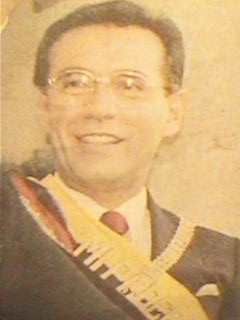 Jamil Mahuad Witt (Slogan: "We must do now what has to be done")
Jamil Mahuad Witt (Slogan: "We must do now what has to be done")
Oct. 1 - Work stoppages and other public demonstrations take place to protest price increases of electricity, diesel-oil and gas for domestic use; the Army maintains public order; 3 persons die and 9 are wounded in the coastal region.
Oct. 26 – In Brazil President Jamil Mahuad of Ecuador and President Alberto Fujimori of Peru sign an agreement accepting border limits along a 78 kilometer line of disputed territory; these limits were drawn by the Guarantors of the Protocol of Rio de Janeiro following the decision by the Congress’s of Ecuador and Peru to abide by the dictum of the Guarantors. The borders are established along the summits of the Cordillera of the Condor. Peru cedes to Ecuador the ownership, but not the sovereignty, of one square kilometer of land that contains Tiwintza (where 14 Ecuadorian soldiers are burried). Also signed, are agreements on commerce, navigation, border integration, and to establish a by-national commission on measures for mutual trust and security. Under the agreement on navigation, Ecuador has free passage through the tributaries to the Amazon River. Dec. 9 - President Mahuad ratifies the agreements with Peru on commerce, navigation and border integration.
1998 Dec. - Congress creates the "Agencia de Garantia de Depositos (AGD)"; the State insures without limit the deposits in the banks.
1999 Feb. 17 - Jaime Hurtado González, a Congressman representing the Esmeralda Province and member of the Democratic Popular Movement (MPD), and his two companions are shot to death in Quito by an unknown assailant.
Mar. 8/12 - The private banks close their doors from the 8th through the 12th of the month, by order of the "Superintendencia de Bancos," to stop a run on foreign currency and avoid insolvency of the banking system. Bank accounts are frozen. The administration of more than 50% of the banking system is taken over by the State AGD. The banking crisis was caused mainly by the efects of "El NIño", the drop in the price of the barrel of petroleum, fiscal deficits, loans in US$ in an economy that was not "dollarized", enormous loans to businesses linked to the owners of the banks, and the Tax on Circulation of Capital (ICC) which incites massive withdrawals of monies from the Ecuadorean banks to be deposited in foreign banks.
A great number of strikes begin in protest to the government's economic policies; the country is paralyzed. Mahuad reduces the budget of the State (including the armed forces) and tries to reduce subsidies to meet the requirements of the International Monetary Fund as pre-conditions to grant a loan to the country. The economic uncertainty and speculation on the dollar cause a galloping devaluation of the sucre.
The volcanos "Guagua" Pichincha and Tungurahua keep the
inhabitants of these provinces in the expectation of a grand disaster.
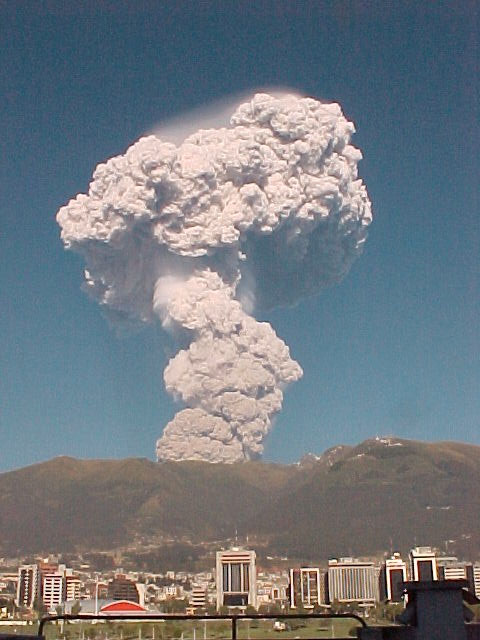
"Guagua" Pichincha |
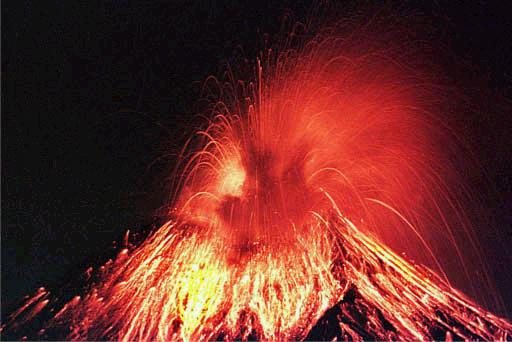 Tungurahua
Tungurahua |
2000 Jan . 9 - Mahuad announces the "dollarization" the economy; in the transition, the sucre would be kept as a supplemental currency at a fixed rate of exchange of 25,000 sucres for each U.S. dollar. Jan. 21 – Supported by thousands of indians, and with the complicity of hundreds of army and police officers, Antonio Vargas Huatatoca (leader of the "Confederación de Nacionalidades Indigenas"), Colonel Lucio Gutiérrez and Carlos Solórzano Constantine (ex-president of the Supreme Court of Justice), self-proclaim the “Junta of National Salvation” and overthrow President Mahuad.
 "Junta of the Three Hours" (Solórzano, Mendoza and Vargas)
"Junta of the Three Hours" (Solórzano, Mendoza and Vargas)
The "coup d'état" accomplished, General Carlos Mendoza Poveda (Defense Minister of Mahuad) replaces Colonel Gutiérrez in the Junta. The High Command of the Armed Forces declares it does not recognize the Junta presided by General Mendoza. Jan. 22 – The presidency is turned over to Vice-presidente Gustavo Noboa Bejarano.
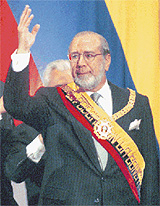 Gustavo Noboa Bejarano
Gustavo Noboa Bejarano
Jan. 26 – Congress inaugurates Gustavo Noboa Bejarano as the new Constitutional President; days later Congress elects Pedro Pinto Rubianes as the new Vice-president. Noboa decides to continue with the "dollarization" of the economy.
2001 Jan. 2 - Students in Quito, Guayaquil and Cuenca initiate public demonstrations in opposition to the fare increases of public transportation, higher prices of gas for domestic use and fuels for vehicles; they, lead by economic and political groups opposed to Noboa, want the State to continue the subsidy of these fuels.
The exodus of labor (Ecuadoreans working abroad) surges as one of the major sources of foreign currency.
Feb. 2 - Noboa decrees a state of emergency after the
leaders of an Indian uprizing break discussions about the economic measures.
The Indians close the roads in Cuenca, Riobamba, Ambato, Cayambe and other
locations; the interprovince transport is paralized in the highlands. Feb.
5 - Three agricultural workers die and more than 80 persons are wounded
(including 9 soldiers) during armed confrontations in Tena and Ambato (the
military reacted to the gunfire from the Indians). Feb. 7 – The Indian uprizing
stops after the government agrees to reduce the prices of fuels and urban
transportation.
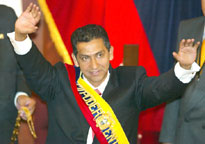 Lucio Gutiérrez Borbúa
Lucio Gutiérrez Borbúa